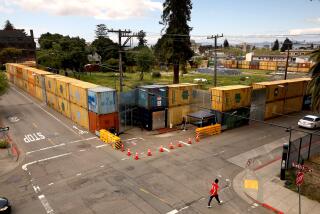Ineffective Solution
- Share via
Regarding “Reducing Runoff, a Home at a Time” by Deborah Prussel, Feb. 11: The Santa Monica ordinance described in the article has a great potential of adversely affecting new or remodeled homes as well as existing neighboring properties with little, if any, benefit to the health of the Santa Monica Bay.
Introducing storm water into the ground could result in many adverse effects, from the geotechnical point of view. Expansive soils may cause differential movement as a result of absorbing water percolating from the seepage pits and/or leach lines. Similarly, collapsing soils may settle when they absorb water, again causing differential movement. The liquefaction potential of sandy soils may increase as a result of becoming saturated, even though they are well above the ground-water table.
If more cities choose to adopt similar ordinances, then the amount of exposure is multiplied, again with very little return on improving the health of Santa Monica Bay.
A far more cost-effective and speedy approach is to have each city install de-greasing systems on the catch basins, and or storm drains. Obviously this kind of approach would cost money and may make it necessary to raise taxes to cover the costs. However, the new homeowners and those who are remodeling their houses will pay a large price for these ineffective ordinances.
AZZAM J. ALWASH
Tustin
*
TreePeople has been studying the problems of collecting urban runoff. There is a video on a house they redid to absorb urban runoff. There also is a book called “Second Nature: Adapting L.A.’s Landscape for Sustainable Living.” Go to https://www.treepeople.org/trees for more information.
SARAN KIRSCHBAUM
Los Angeles
More to Read
Sign up for Essential California
The most important California stories and recommendations in your inbox every morning.
You may occasionally receive promotional content from the Los Angeles Times.













